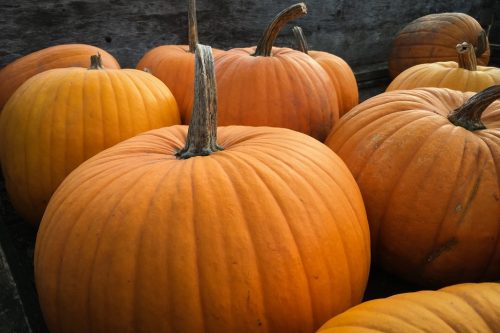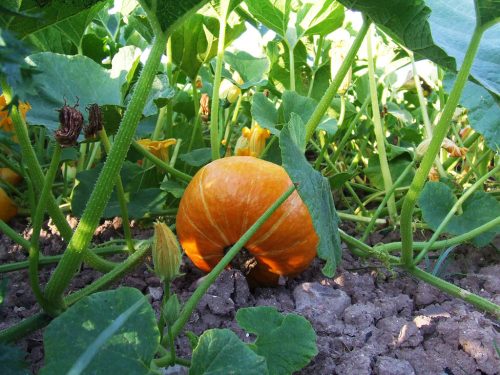Pumpkins are related to gourds, zucchini, patisson and cucumbers.
You are viewing the mobile-adapted version of the page.
The one for tablets, laptop and desktop also provides general information, such as origin and cultivation.
Pumpkins belong to the genus Cucurbita and are related to gourds, zucchini, patisson and cucumbers. Sow in pots (one seed per ± 0.5-liter pot) for in the warm windowsill or greenhouse. In late May, the pumpkin plant can be put in open ground. Starting in mid-May, pumpkins can be sown in open ground. A pumpkin really needs space. It can grow in a wigwam or pyramid of bamboo sticks, but also lying on the ground. In that case, remember that the pumpkin needs an untidy 6 m² surface. Protect against night frost with a plastic tunnel or bell jar.
Pumpkin leaves are susceptible to fungi; cut them away. Too dry or too moist soil encourages mold growth. Offshoots in the leaf axils are removed (Pinching).
In summer, if the soil is very wet, put some straw or wood chips under the growing pumpkins. On the wet soil, the pumpkins can rot and snails have free rein. Pumpkins can be harvested in September and October.
As the pumpkin ripens, the skin thickens. As soon as you can no longer press the skin and the stem yellows and shrivels, the pumpkin is ripe. Leave the stem on the pumpkin to keep them fresh longer.
Those who self-seed zu
Bugs
Feeding on leaf young plants: snails and slugs.
Leaf turns yellow and lumpy; eggs on underside of leaf: greenhouse whitefly (Trialeurodes vaporariorum).
Fungi & diseases
White spots on leaves, growth retarded: powdery mildew.
Other
Flowers do not grow and fall off: they are not pollinated. Cold weather is often the cause, as soon as it gets warmer, pollination starts.


